LED is the abbreviation of LightEmittingDiode, which is made up of several layers of very thin doped semiconductor materials, one layer with excess electrons, and the other layer lacks electrons to form positively charged "holes", working When the current passes, the electrons and holes combine with each other, and the excess energy is released in the form of light radiation. The shape and size of the LED backlight panel vary depending on the shape and size of the LCD panel light. The LED backlight panel is basically rectangular or elongated. It has two basic structures: side light and bottom light. The side-emitting structure is mainly used for a strip-shaped backlight board (generally having a width greater than 2 times); and the bottom-emitting structure is mainly used for a backlight board having a length and a width. When the LED is lit, the light is incident on the transparent plexiglass, so that the entire illuminating surface can see the bright light, which is called the edge light effect. The top of the plexiglass is made of micro-beads to make the light on the entire luminous surface more uniform. The top of the plexiglass has a creamy white plastic film that softens the light. The sides of the backlight board are sealed with silver shading tape. Each LED lighting unit has two diodes connected in series, and several columns form an LED array (depending on the length of the backlight board).
Light-emitting diodes have a number of advantages over existing CCFT technologies. The LED is a flat light source. The most basic LED lighting unit is a square with a side length of 3 to 5 mm. It is easy to combine into a surface light source of a given area. If it is used as a backlight for a liquid crystal screen, the required auxiliary optical components are required. It can be done very simply, and the screen brightness uniformity is even better. Moreover, the LED backlight has a better color gamut, and the color expression is stronger than that of the cold cathode fluorescent lamp backlight, which can make a good complement to the liquid crystal technology with insufficient display color. At present, the color gamut of LED backlights even exceeds the highest level of AdobeRGB and NTSC color standards, which can make LCD monitors have excellent color performance (in contrast to NTSC specifications, LCD backlights with LED backlights can reach its color gamut range of 105). %, while the CCFT backlight LCD display color gamut is only 78% of NTSC). Secondly, the LED uses a low-voltage power supply of 6 to 24V. The design of the power supply module is also quite simple. The LCD panel using the LED backlight consumes 48% less power than the commonly used CCFT (cold cathode fluorescent tube) LCD screen. It also contains no heavy metal mercury that is harmful to health and the environment.
Take Toshiba's LibrettoU100 as an example. It uses a 32-LED independent control mechanism on a 7.2-inch LCD screen to realize a backlight system that can clearly and clearly display images and text. The power consumption is only 1.3W, and the same size. The CCFT cold cathode fluorescent tube required for the LCD screen consumes more than 2.5W. Compared with LCD displays, LED displays have higher refresh rates, which make LEDs perform better in terms of video. The single element of LED display has a response speed of 1000 times that of LCD screens. Mistakes, and adapt to low temperatures of minus 40 ° C. In addition to low power consumption and environmental protection, LED has a great advantage, that is, the service life is up to 100,000 hours. Even if it is used continuously for 10 hours every day, it can last for 27 years.
However, there are some serious birth defects in LEDs. The most troublesome thing for the industry is the luminous efficiency of LEDs. LED devices as backlights are mostly white light type, while white LED devices are not efficient at the beginning, resulting in generally low screen brightness. For example, in current LED technology, regardless of the manufacturer of the screen, the brightness of the LED components are different. At present, the luminous efficiency of CCFT cold cathode fluorescent lamps can reach 50-100 lm/W (lumens/watt), while the luminous efficiency of white LED devices is only 20 lm/W or even lower at the beginning, which causes color shift and inconsistency. The true "white" color purity and poor quality, which is destined to be not suitable as a backlight for LCD displays at the beginning. To eliminate this problem, LED manufacturers have "partitioned" or split the chips into blocks with approximate color and brightness. This kind of processing is helpful, but there are still deficiencies, offsets in brightness and color. Although the manufacturer later developed a color correction circuit, this problem can be corrected to a certain extent, but the uniformity problem still exists. Fortunately, the technology in this field is progressing very rapidly. The luminous efficiency of white LEDs has increased by 60% per year. So far, the luminous efficiency of white LED devices has exceeded 50 lm/W and has begun to reach practical levels. The industry hopes to increase the luminous efficiency of white LEDs to a high level of 75 lm/W by 2007, and the latest color correction system can also control the deviation of color and brightness within a reasonable range. One of the most representative color correction systems is Lighthouse's M4 system, which allows each pixel (brightness and color) in each panel to be individually controlled to ensure a pure white color and a better color balance. / Color control effect, the deviation in color and brightness between pixels is controlled within a range of no more than 1%. In contrast, the vast majority of LED screens that use only hierarchical or partitioned block LEDs typically have a 30% deviation.
Although LED has many advantages, it is difficult to popularize in a short time. For example, the cost of an LED backlight system is higher than that of a cold cathode fluorescent tube. At present, the price of LED backlight module components is about 5 times that of CCFT. The larger the screen size, the higher the cost of adopting LED backlight technology. The reason why Toshiba U100 uses this display technology is that it is only the Toshiba notebook 20th anniversary souvenir. Fortunately, the LED industry also has a similar "Moore's Law" in the microprocessor industry - Haitz's Law, named after Roland Haitz, a former technical scientist at Agilent (leading in the LED field). The content is that the price of LED will be 1/10 of the original 10 years, and the performance will be 20 times higher. If this law can be continuously fulfilled, and as capacity increases, the cost of LED backlights will fall rapidly. It is expected that the price of LED backlights will be reduced to about 2 times that of CCFT backlights in the next one or two years, and it is only one step away from mass popularization.
Laptops use LCD liquid crystal displays to display color and graphics. Whether using super-twisted nematic (STN) technology or thin film transistor (TFT) technology, white backlights are required for illumination. The white light spectrum contains the colors of all colors, and the color filter of the display picks the desired color from the white light spectrum, which ultimately forms a colorful and realistic picture that our eyes see. From the principle, we can know that LCD brightness, contrast and other indicators largely depend on the performance of the backlight, and the backlight tube has a limited life due to its own characteristics, which is a consumable item, which directly determines the use of the liquid crystal display device. life. Whether it is a desktop LCD display or a notebook screen, almost all large-area LCD displays use CCFT (ColdCathodeFluorescentTube) backlights.
Although technically CCFT is quite mature, both performance and stability have been tested. However, cold cathode fluorescent lamps are tubular light sources. To evenly distribute the emitted light to each area of ​​the panel, a relatively complicated auxiliary component is required, and the thickness of the screen is also difficult to control. And as the panel increases, multiple sources must be used, which requires that the light from these CCFTs must also match. More importantly, the narrow color gamut of cold cathode fluorescent lamps can seriously affect the chromatogram displayed on LCD displays, resulting in almost all LCD monitors failing to meet the AdobeRGB color gamut standard for flat printing. The CCFT backlight allows the LCD display to reproduce only up to 80% of the color that can be transmitted by NTSC signals. At the same time, the energy efficiency of CCFT backlights is low. During the transmission of light energy from the backlight to the screen, the optical energy loss is very serious, and finally about 6% of the light energy can be truly utilized. In order to achieve higher brightness and contrast, manufacturers must increase the output power of the light source or increase the number of lamps, and the result is that the power consumption of the whole machine is increased. This will not have much impact on desktop LCD monitors or LCD TVs, but it will have a big impact on notebook LCD screens. In particular, these CCFTs require high-voltage AC drive, and the requirements for the power transformer set are relatively complicated. In addition, the service life of cold cathode fluorescent lamps is not too long, and many LCD products will yellow and brighten their brightness after several years of use.
LCD is the most power-hungry component in notebook computers. In order to maximize battery life, the industry is actively developing low-power LCD screens, and CCFT backlights clearly run counter to it.
How to reduce the power consumption of laptop display screens and enhance environmental protection? Some notebook manufacturers, represented by Sony and Toshiba, have long explored the use of white LED light-emitting diodes instead of CCFT as a backlight for notebook monitors. A major breakthrough. At the beginning of this year, Toshiba announced the launch of the TL10W02-D, a new generation of white LEDs with the highest luminous flux in the industry. In May, in commemoration of the 20th anniversary of the birth of notebook computers, the company launched the first LED backlight technology with a 7.2-inch LCD screen. LibrettoU100, Sony also uses LED backlight technology in the new TX series notebook.

PCB Mount Type current sensing transformer
A Current Transformer (CT) is a type of transformer that is used to measure alternating current (AC). It produces a current in its secondary which is proportional to the current in its primary.
Current transformers, along with voltage or potential transformers, are instrument transformers. Instrument transformers scale the large values of voltage or current to small, standardized values that are easy to handle for measuring instruments and protective relays. The instrument transformers isolate measurement or protection circuits from the high voltage of the primary system. A current transformer provides a secondary current that is accurately proportional to the current flowing in its primary. The current transformer presents a negligible load to the primary circuit.
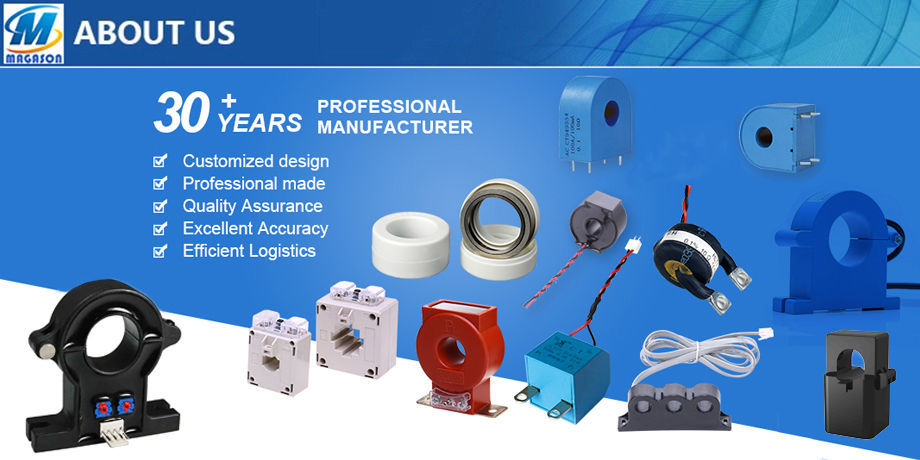
Product name
PCB Mount Type current sensing transformer
Smart meter, Energy monitoring devices
1.Low profile, compact size, Epoxy resin encapsulated, fully enclosed.
2. PCB mounting type, easy to fix and install.
3.wide linearity range for output current and low phase shift error.
4.Customer specifications are available.
5. Used in universal and be in good interchangeability.
Brand name
Magason-tech
Model Number
ZCT02 series
Usage
Coil Structure
Toroidal
Phase
Single
Material
core, wire, resin , plastic case
Certification
ISO9001:2015, ROHS
Package
Carton
Shipping Term
DHL Fedex TNT EMS UPS
Product features
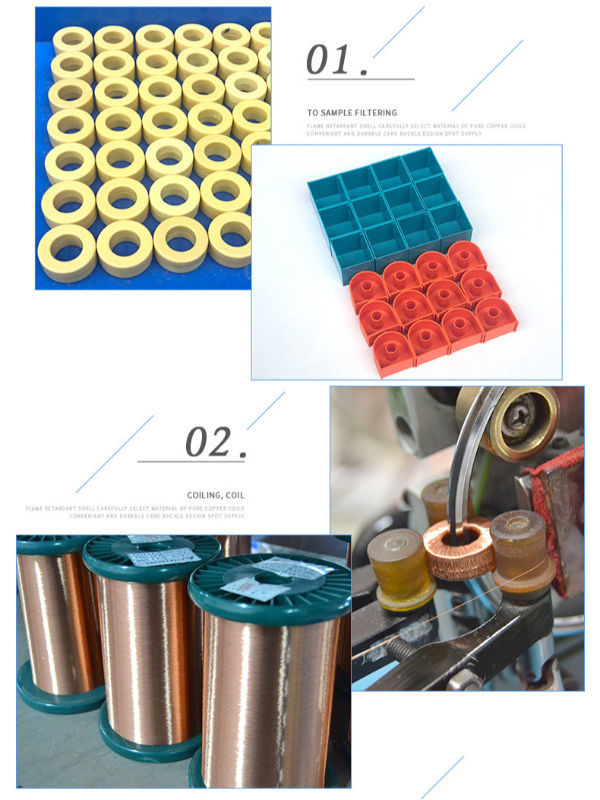
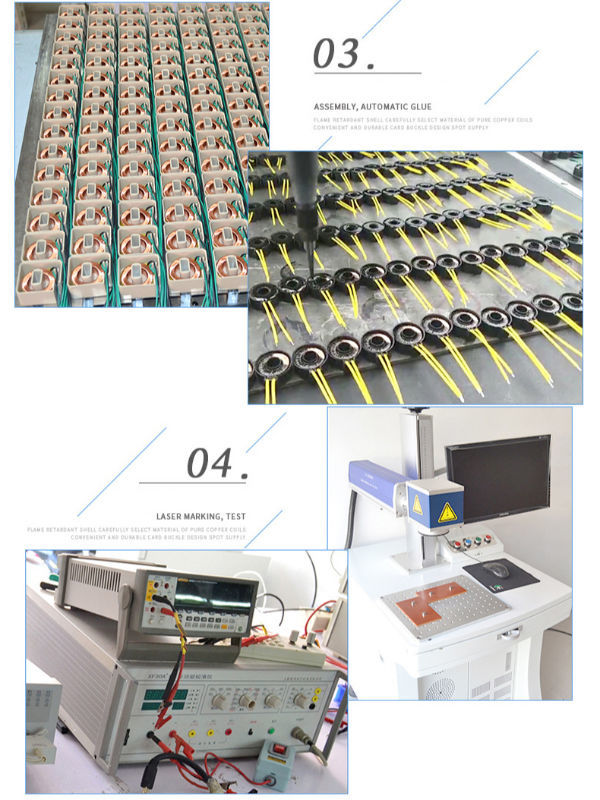
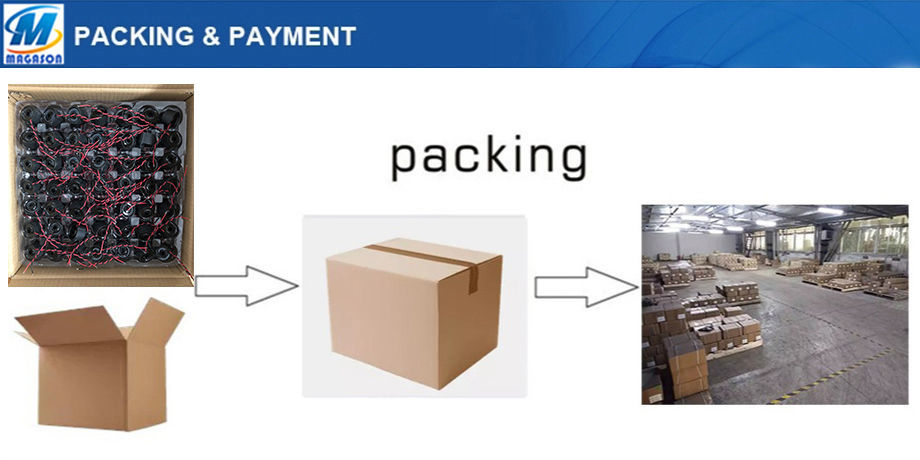
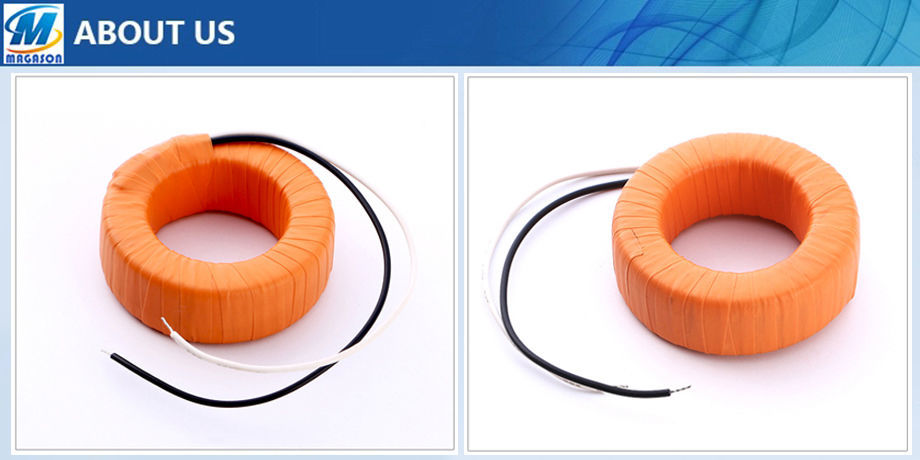 We attend Electrical exhibition In India, Germany and Brizil, South Korea...
We attend Electrical exhibition In India, Germany and Brizil, South Korea...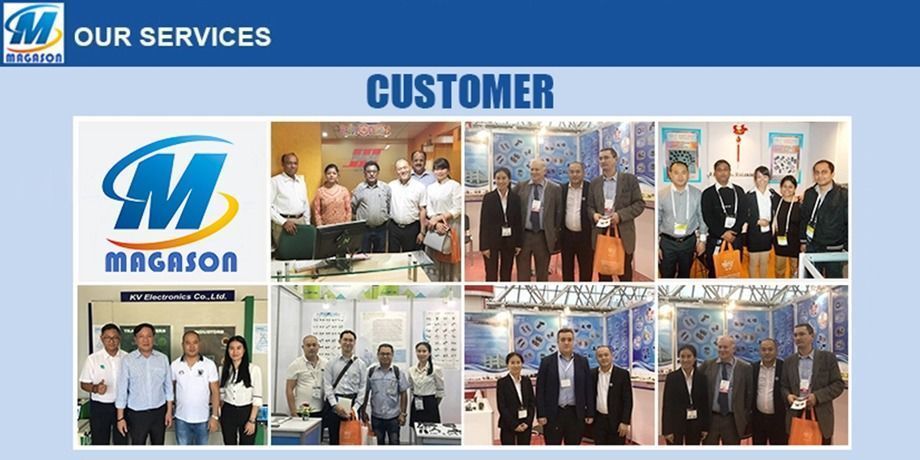 All of our material meet the RoHs, UL , SGS, CE certification
All of our material meet the RoHs, UL , SGS, CE certification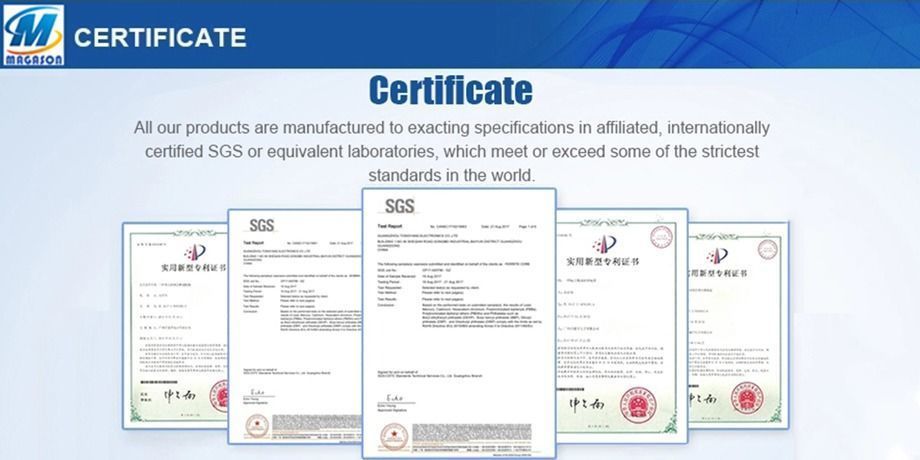
FAQ
1-MOQ?
We will work hard to fit your MOQ .Small purchase quantity is ok.
2-Payment term?
T/T, Western Union, Paypal, Credit Card
3-Delivery port?
Shenzhen, Guangzhou, Zhongshan, Hongkong.
4-Shipping date?
About 7 days when we check the payment.
5-Do you produce the core and bobbin by yourself .
Yes.we have 2 head company,1 subsidiary company.one is bobbin factory,one is core factory,last one is transformer factory.
6-Where is your factory?
In ShaanxI
Mini Pcb Current Transformer,Pcb Current Transformer,Energy Meter Current Transformer,Precision Pcb Current Transformer
Shaanxi Magason-tech Electronics Co.,Ltd , https://www.magason-tech.com